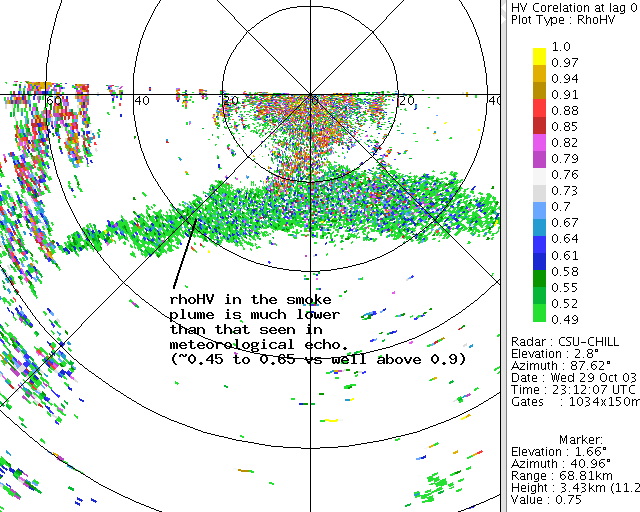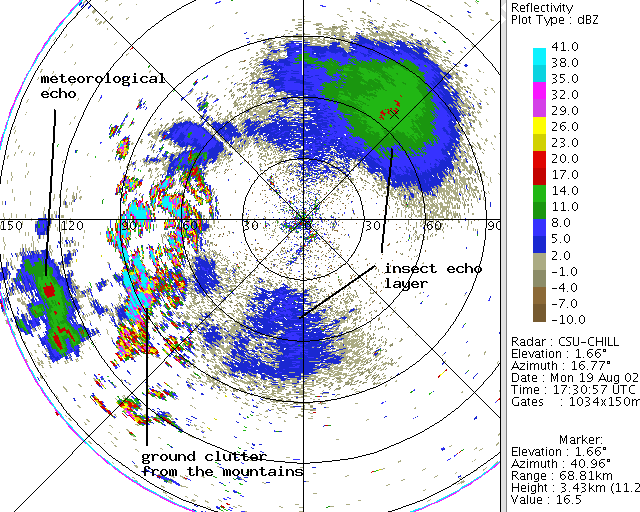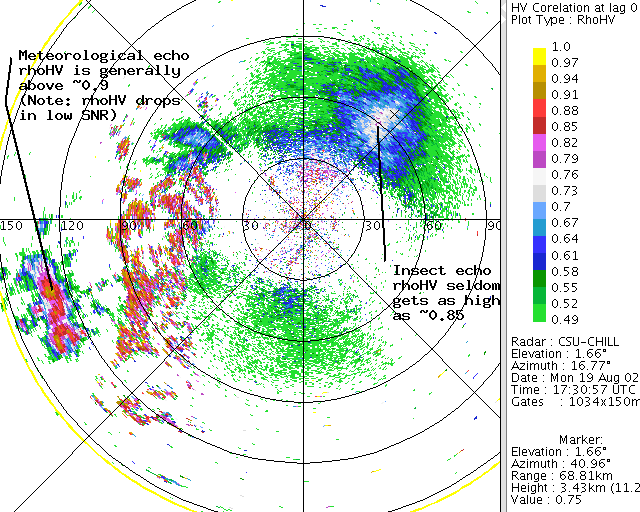Non-precipitation echoes: insects and smoke particles
During the warmer portions of the year, the concentrations of airborne insects frequently cause readily detectable radar echoes to appear in optically-clear regions of the boundary layer. The following PPI data was collected by the CSU-CHILL radar during the late morning hours of a mid-August day.
Reflectivity
Differential Reflectivity
Insects, especially the larger sized species, tend to have bodies that are significantly longer than they are tall; this produces distinctly positive values. In general, 's are much higher in the insect layer than they are in the precipitation echo located ~130 km WSW of the radar. Additionally, the insects appear to be migrating since their bodies are preferentially aligned along a NW - SE direction. (Reflectivity and both maximize when the radar obtains a broadside view of the insects when looking along ~NE or SW azimuths.)

Copolar Correlation Coefficient
The magnitude can also be used to differentiate between insects and precipitation echoes. It is generally observed that the in insect echoes is significantly less than that observed from precipitation (ie., ~0.8 and below vs. ~.95 and above).
Note: No noise power subtractions were done in the calculation of the values shown in these plots. Noise will reduce the values in low signal to noise ratio areas. This probably accounts for the reductions in the weaker echo portions of the insect layer.
Reduced levels are also characteristic of the ash and debris particles that are carried aloft in the smoke plumes generated by vigorous fires. A PPI scan through a smoke plume from a wild fire is shown below:

As was the case with the insect case shown above, values in the smoke plume particulate echo are generally well below 0.85:




